#aplacental
Explore tagged Tumblr posts
Text
dinner party!!
to the left: talking very seriously about my studies and internship and asking about a mutual acquaintance's upcoming nuptials (76yo violinist)
to the right: talking equally seriously about shark reproduction and arm wrestling/thumb warring (8yo cousin)
#we were talking about sharks because i was wearing a shark patterned button down shirt :))#i told him about sand tiger shark reproduction which i had learned about by way of a sidgeno mpreg fic yes i did and he told me about dwarf#lantern shark reproduction something about their skin and organs being cleaned by god?? hm wikipedia says they do aplacental viviparity...#okay i think his explanation was more fun :D#i let j win all the left handed battles (he's a natural lefty but his parents are trying to be strict making him write righty which i think#is bullshit) and i took the right handed battles because i gotta keep him humble#a happy thing
6 notes
·
View notes
Text










Torpedo torpedo, better known as the common torpedo, common torpedo ray, ocellate torpedo, or eyed electric ray, is a species of electric ray in the family Torpedinidae which is endemic to the eastern Atlantic Ocean and Mediterranean Sea. These rays typically dwell in coastal and nearshore waters but can occasionally be at depths up to 1,300ft (400m), however they tend to prefer warm sandy flats and sea grass beds. Torpedo rays are generally solitary and nocturnal ambush predators which feed on a variety of fish, crustaceans, and worms. They are themselves preyed upon by seals, sharks, and large boney fish. As with other members of its family, the common torpedo can subdue both prey and predator with strong electric shocks of up to 200 volts which are generated from a pair of large kidney-shaped electric organs which are visible beneath the skin on either side of the head. The electrogenic properties of this species led it to be used in medicine for the treatment of pain and diseases such as gout by various cultures in antiquity such as the Greeks, Egyptians, and Carthaginians. The Romans in particular used the common torpedo to treat headaches. Reaching around 12 to 24 inches (30 to 61cms) in length and 7 to 16inches (18 to 41cms) in width, with females being slightly larger than males, the common torpedo has a nearly circular pectoral fin disc and a short, thick tail with two dorsal fins of nearly equal size and a large caudal fin. The eyes are small and followed by spiracles of comparable size. The dorsal coloration of the common torpedo is rusty orange to reddish brown which is adorned with prominent blue spots on its back, which usually number five but may vary from zero to nine. The underside is cream-colored, with dark disc margins. Breeding typically occurs from December to February. Common torpedos are aplacental viviparous, with the developing embryos nourished by yolk and histotroph ("uterine milk") produced by the mother. Females produce litters of up to 28 after a gestation period of 4–8 months depending on the geographical region. Common torpedo reach sexual maturity at around 10in ( 25cms) in length and may live upwards of 10 years.
#pleistocene pride#pliestocene pride#pleistocene#pliestocene#ocean#sea#animal#marine#marine life#shark week#ray#electric ray#electricity#common torpedo#animal facts#ancient history#torpedo
127 notes
·
View notes
Text
Special greek shark!!
I'm in Greece right now so for the next couple days I will only cover sharks that can be found around the Mediterranean sea!
Daily shark day 10:
Angel Shark
Squatina squatina, the angelshark or monkfish, is a species of shark in the family Squatinidae (known generally also as angel sharks), that were once widespread in the coastal waters of the northeastern Atlantic Ocean. Well-adapted for camouflaging itself on the sea floor, the angelshark has a flattened form with enlarged pectoral and pelvic fins, giving it a superficial resemblance to a ray. This species can be identified by its broad and stout body, conical barbels, thornless back (in larger individuals), and grayish or brownish dorsal coloration with a pattern of numerous small light and dark markings (that is more vivid in juveniles). It measures up to 2.4 m (7.9 ft) long. Like other members of its family, the angelshark is a nocturnal ambush predator that buries itself in sediment and waits for passing prey, mostly benthic bony fishes, but also skates and invertebrates. An aplacental viviparous species, females bear litters of seven to 25 pups every other year. The angelshark normally poses little danger to humans, though if provoked, it is quick to bite. Since the mid-20th century, intense commercial fishing across the angelshark's range has decimated its population via bycatch – it is now locally extinct or nearly so across most of its northern range, and the prospects of the remaining fragmented subpopulations are made more precarious by its slow rate of reproduction. As a result, the International Union for Conservation of Nature has assessed this species as Critically Endangered.
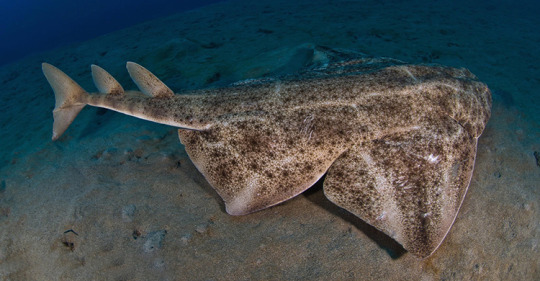
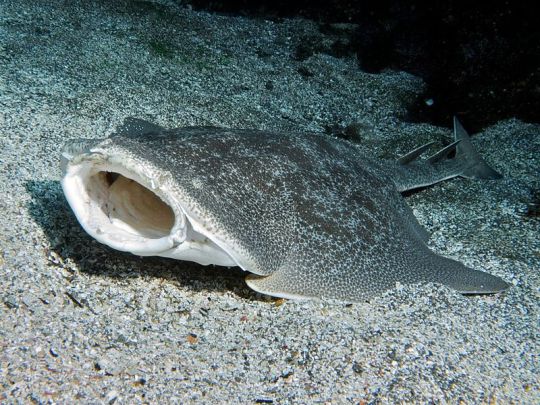
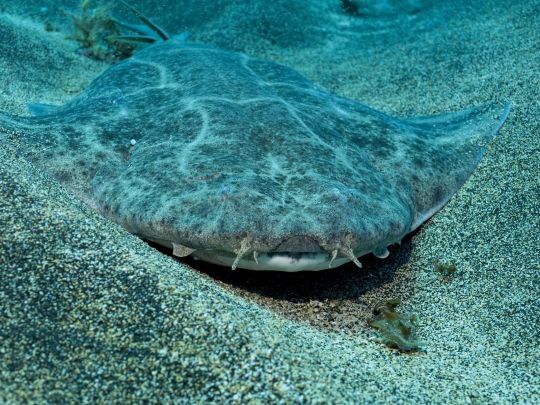
#ocean#shark of the day#sharks#marine biology#sea creatures#shark#daily sharks#sea animals#angel shark
277 notes
·
View notes
Text
Daily fish fact #606
Common stingaree!

The species is aplacental viviparous, which means the developing babies are nourished by the “uterine milk” the mother produces! The common stingaree is the most common ray species in the coastal waters of eastern Australia.
#fish#fish facts#fishfact#fishblr#marine biology#marine life#marine animals#sea creatures#sea animals#sea life#biology#zoology#ray#rays#stingaree#common stingaree
144 notes
·
View notes
Text
Post #1! Leopard sharks

Leopard sharks are one of the most common sharks found along the coast of California! Leopard sharks are a species of Houndshark. They are slender sharks that have silvery-bronze skin that’s patterned with dark ovals down it’s back. The older a Leopard shark is, the paler the interior of the spots!! Leopard sharks are normally docile towards humans and have teeth that are better shaped for smashing rather than cutting! The reason they’re teeth are shaped this way is because they prey on fish eggs, crabs, clam siphons, ect. Shark teeth can come in a variety of different shapes depending on what the shark primarily feeds on. Large schools of Leopard sharks are common in bays and estuaries. Leopard sharks tend to be residential, typically staying within a particular territory, and exhibit limited long-distance migration. Because of this there’s genetic divergence in populations of Leopard shark living in different regions. They are aplacental viviparous, meaning that the young hatch inside of the uterus!
Okay well that’s pretty much all :3
#marine biology#leopard shark#juvenile#nature#sharks#fishies#shark facts#fish facts#stemblr#micaelyn info dumps
14 notes
·
View notes
Note
IM SORRY FOR FORGETTING ABT THE FISH FOR YESTERDAY i was cleaning my closet out. :] my back hurts now. so heres a 2 for 1
The whale shark (Rhincodon typus) is a slow-moving, filter-feeding carpet shark and the largest known extant fish species. The largest confirmed individual had a length of 18.8 m (61.7 ft). The whale shark holds many records for size in the animal kingdom, most notably being by far the largest living nonmammalian vertebrate. It is the sole member of the genus Rhincodon and the only extant member of the family Rhincodontidae, which belongs to the subclass Elasmobranchii in the class Chondrichthyes. Before 1984 it was classified as Rhiniodon into Rhinodontidae.
The whale shark is found in open waters of the tropical oceans and is rarely found in water below 21 °C (70 °F).[2] Studies looking at vertebral growth bands and the growth rates of free-swimming sharks have estimated whale shark lifespans at 80–130 years. Whale sharks have very large mouths and are filter feeders, which is a feeding mode that occurs in only two other sharks, the megamouth shark and the basking shark. They feed almost exclusively on plankton and small fishes and pose no threat to humans.
The species was distinguished in April 1828 after the harpooning of a 4.6 m (15 ft) specimen in Table Bay, South Africa. Andrew Smith, a military doctor associated with British troops stationed in Cape Town, described it the following year. The name "whale shark" refers to the fish's size: it is as large as some species of whale. In addition, its filter feeding habits are not unlike those of baleen whales.

The frilled shark (Chlamydoselachus anguineus) also known as the lizard shark, and the southern African frilled shark (Chlamydoselachus africana) are the two extant species of shark in the family Chlamydoselachidae. The frilled shark is considered a living fossil, because of its primitive, anguilliform (eel-like) physical traits, such as a dark-brown color, amphistyly (the articulation of the jaws to the cranium), and a 2.0 m (6.6 ft)–long body, which has dorsal, pelvic, and anal fins located towards the tail. The common name, frilled shark, derives from the fringed appearance of the six pairs of gill slits at the shark's throat.
The two species of frilled shark are distributed throughout regions of the Atlantic and the Pacific oceans, usually in the waters of the outer continental shelf and of the upper continental slope, where the sharks usually live near the ocean floor, near biologically productive areas of the ecosystem. To live on a diet of cephalopods, smaller sharks, and bony fish, the frilled shark practices diel vertical migration to feed at night at the surface of the ocean. When hunting food, the frilled shark curls its tail against a rock and moves like an eel, bending and lunging to capture and swallow whole prey with its long and flexible jaws, which are equipped with 300 recurved, needle-like teeth.
Reproductively, the two species of frilled shark, C. anguineus and C. africana, are aplacental viviparous animals, born of an egg, without a placenta to the mother shark. Contained within egg capsules, the shark embryos develop in the body of the mother shark; at birth, the infant sharks emerge from their egg capsules in the uterus, where they feed on yolk. Although it has no distinct breeding season, the gestation period of the frilled shark can be up to 3.5 years long, to produce a litter of 2–15 shark pups. Usually caught as bycatch in commercial fishing, the frilled shark has some economic value as a meat and as fishmeal; and has been caught from depths of 1,570 m (5,150 ft), although its occurrence is uncommon below 1,200 m (3,900 ft); whereas in Suruga Bay, Japan, the frilled shark commonly occurs at depths of 50–200 m (160–660 ft).

really fond of the frilled shark i think it is lovelhy and a little ugly but that is what makes it lovely
5 notes
·
View notes
Text
Found near the sea floor over outer continental and insular shelves and upper slopes, the prickly dogfish is thought to be a slow-moving predator of small benthic organisms. It is aplacental viviparous, with females giving birth to litters of around seven pups. This species is an uncommon bycatch of bottom trawls.
Just found out about the weirdest shark ever
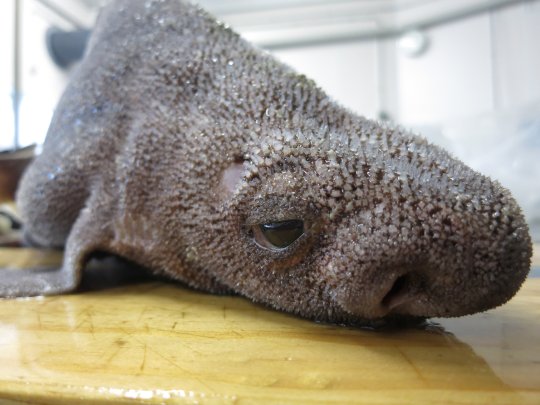
Prickly dogfish
40K notes
·
View notes
Text
Everything in reality is either placental or aplacental.
0 notes
Note
top 5 fish :)
omg yes thank u!!!!
5. Coelacanth

They were thought to be extinct since the late cretaceous, but were rediscovered in the 20th century in Africa! They're in a subclass related to lungfish and fish from the Devonian!
4. Frilled shark

Another living fossil, like the coelacanth! The frilled shark has its name because of its peculiar gills :). It also has an anguiliform body and spiked teeth!
They are aplacental-viviparous (the mother carries the eggs inside her uterus until they hatch)
3. Gulper eel

Deep sea fish yeah!!!!! This fish gets its name due to their ability to extend their stomach and mouth to catch bigger prey ^ and in spanish is called "pez pelícano" (pelican fish) because of the same characteristic :D
Gulper eels live in the bathypelagic zone and have a tail equipped with a bioluminiscent lure to attract prey 💖
2. Reedfish

This species is a freshwater one :) Reedfish or ropefish are bichirs, they have lungs in addition of their gills. It can get up to 40 cm long!
They have peaceful and curious personalities, are nocturnal and can sometimes come out of the water in the wild, moving like a snake and feeding on worms and other invertebrates.
🥰💕1. ANGLERFISH BABEYYYYYY💕😍

My favorite animal ever i love them sososososo much
They're an order of teleost fish that live mainly in the bathypelagic zone and below, they are known for their extreme sexual dymorphism and their peculiar way of reproduction, where the male bites the female and fuses with her.
The females are several times larger than the males, the biggest ones can measure up to 60 cm, and the females have a bioluminiscent lure to attract prey! it's filled with glowing bacteria that she shakes to attract her prey.
There are some species that have highly sensitive "hairs" that sense movement (like the one in this gif ^) and also use that to catch prey :)
9 notes
·
View notes
Photo

The frilled shark (Chlamydoselachus anguineus) and the southern African frilled shark (Chlamydoselachus africana) are the two extant species of shark in the family Chlamydoselachidae. The frilled shark is considered a living fossil, because of its primitive, anguilliform (eel-like) physical traits, such as a dark-brown color, amphistyly (the articulation of the jaws to the cranium), and a 2.0 m (6.6 ft)–long body, which has dorsal, pelvic, and anal fins located towards the tail. The common name, frilled shark, derives from the fringed appearance of the six pairs of gill slits at the shark's throat.
The two species of frilled shark are distributed throughout regions of the Atlantic and the Pacific oceans, usually in the waters of the outer continental shelf and of the upper continental slope, where the shivers usually live near the ocean floor, near biologically productive areas of the ecosystem. To live on a diet of cephalopods, smaller sharks, and bony fish, the frilled shark practices diel vertical migration to feed at night at the surface of the ocean. When hunting food, the frilled shark moves like an eel, bending and lunging to capture and swallow whole prey with its long and flexible jaws, which are equipped with 300 recurved, needle-like teeth.
Reproductively, the two species of frilled shark, C. anguineus and C. africana, are aplacental viviparous animals, born of an egg, without a placenta to the mother shark. Contained within chondrichthyes (egg capsules) the shark embryos develop in the mother's body; at birth, the infant sharks emerge from their egg capsules in the uterus, where they feed on yolk. Although it has no distinct breeding season, the gestation period of the frilled shark can be up to 3.5 years long, to produce a litter of 2–15 shark pups. Usually caught as bycatch in commercial fishing, the frilled shark has some economic value as a meat and as fishmeal; and has been caught from depths of 1,570 m (5,150 ft), although its occurrence is uncommon below 1,200 m (3,900 ft); whereas in Suruga Bay, Japan, the frilled shark commonly occurs at depths of 50–200 m (160–660 ft).
2 notes
·
View notes
Text
So for whatever reason, I’ve been thinking about the different types of birth each of the muses species have, and remembered that both the Nomija and the Vasyrus are ovoviviparous (their young are hatched from eggs within the body of the parent, and then birthed). So I kinda wanted to go into that a lil’ bit.

With the Nomija, both genders of the species can carry the young, though it’s primarily the females that do so. Depending on the race of the Nomija, some of the males can produce eggs as well as the females (Nyl is one of these), and if the male can produce eggs, they cannot carry them. Just as males that can carry eggs cannot produce them.
Of course, where the female Nomija have eggs that can be fertilized all year round, the males can only produce them during certain times-- typically for around three to five weeks of the year. And during this time, they don’t release much, if any sperm (whereas usually there’s quite a bit released); though their bodies do continue to produce it.
Males lay up to 100, dime-sized eggs at once, and females have even more, though very few actually become fertile once they come into contact with the sperm. 1-2 is relatively normal for a Nomija, with 3-5 being more rare. Though there have also been cases of up to 12, this is extremely odd, and generally the more offspring that are birthed, the higher the mortality rate for the carrying parent, and the higher the rate of offspring that don’t make it to adulthood.
The reason for there being so many eggs is because the offspring don’t feed from the parent, since they’re aplacental. (don’t have an attachment to the parent) Instead, they feed off of the nutrients of the unfertilized eggs in the womb as a way of sustaining themselves.
Pregnancies last anywhere from 12-16 months on average, but grow to full maturity fairly quick once birthed. Generally reaching it by age 9-10, though it can be as late as 16.

In the cases of the Vasyrus, again, both genders are able to carry the young, and both are capable of producing eggs-- both carrying and releasing eggs at equal frequencies between genders, as well. The major difference is that the Vasyrus can, in the right conditions, have an oviparous birth, as well (offspring birthed from eggs outside the body). This, however, is very rare, making ovoviviporous birth the go-to.
Vasyrus can produce eggs all year round, though again, certain conditions typically have to be met for a pregnancy to work out, and for either male or female to be able to release an egg. As for how they’re fertilized, that’s why the males of the species have two penises. One is...more or less, “normal”, and releases sperm, which in turn fertilizes the eggs, etc. etc. The other is actually an ovipositor, and thus they can release both sperm and egg at any time. Females have an ovipositor as well, though they’re smaller than the male’s, and generally hidden until it can be used.
Either way, 1-3 quarter-sized eggs are generally released, though in extremely rare cases, 5 has occurred. Typically only one is fertilized at a time, and though aplacental as well, the offspring feed from the nutrients present in their own eggs, as well as the latent energy of their parent until they’re ready to be birthed.
This is what generally causes most mortality in Vasyrus pregnancies-- occurring when the offspring feeds off of too much of the parent’s energy, thus killing off the parent before they can be birthed. (Though the child can still survive and be birthed via other means, such as C-sections) There hasn’t been any studies that would suggest that the mortality rate is higher when more offspring are birthed, though Vasyrus children have notoriously high mortality rates, due to their unstable magical energy; regardless of birthing method.
Pregnancies are rather short, lasting between 4-7 months, and once birthed the offspring are extremely slow to grow to full maturity-- only reaching it at around 100 years of age.
Interspecies pregnancies involving either the Nomija or Vasyrus should be monitored closely, especially in the case of the Vasyrus.
#~This much should be common knowledge INFO~#~Side Muse: Vanyllo~#~Knowledge Above All and Power Just After HC~#(This was already a thing#but I decided to get the details down while I was thinking about it)#~Feel your heart pound n.s.f.w~#(I feel like I should probably slap that on there#because I can see someone complaining)
5 notes
·
View notes
Text
Featured Species: Giant Devil Ray (Mobula mobular)
Featured Species: Giant Devil Ray (Mobula mobular)
This week’s featured species glides through the water like an angel, but it is named for its devilish appearance. The Giant Devil Ray (Mobula mobular) belongs to the family Mobulidae which includes other manta and devil rays like the Giant Manta Ray (Mobula birostris) (Tricas et al.,1997). Unlike the manta rays, the devil rays have sharp spines along its tail. These spines are venomous and are…
View On WordPress
#Adriatic Sea#Africa#anatomy#aplacental#aplacental viviparity#aplacental yolk vivparity#Atlantic coast#Atlantic ocean#biodiversity#biology#Conservation#conservation biology#counter current exchange#counter current heat exchange#devil ray#devilray#ecology#ecosystem#elasmo#elasmo-news#elasmobranchii#elasmobranchs#elasmo_branchii#endangered species#filter feeder#filter feeders#giant devil ray#Giant Manta Ray#International Union for Conservation of Nature#Ireland
0 notes
Photo
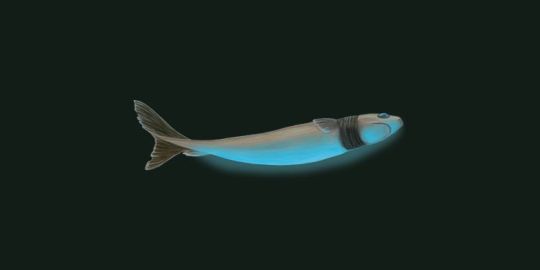

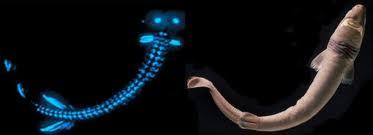

The cookiecutter shark also called the cigar shark, the luminous shark, and the demon whale biter, is a species of small squaliform shark in the family Dalatiidae. This shark occurs in warm, oceanic waters worldwide, particularly near islands, often over 2 miles down. It migrates vertically up to 2 miles every day, approaching the surface at dusk and descending with the dawn. The name "cookiecutter shark" refers to its feeding habit of gouging round plugs out of larger aquatic animals such as marine mammals, cephalopods, boney fish, rays, and other sharks, as if cut out with a cookie cutter. Said cookie cutter marks have also been found on submarines, fishing nets, undersea cables, and even humans. They are also known to eat small prey such as squid, small fish, and crustaceans. They are a social species which is known to travel in schools that communicate with each other by shining there vibrant blue/ green biolumenscent undersides, these concentrations of lights also act to discourage and disorientate larger predators. Females are larger reaching up to 22 inches in length compared to 17 inches for males, both sport long, cylindrical bodies with a short, blunt snout, large eyes, two tiny dorsal fins, and a large caudal fin. They are dark brown, with light-emitting photophores covering its underside except for a dark "collar" around its throat and gill slits. The mouth is short and is surrounded by enlarged, fleshy, suctorial lips. The upper and lower jaws are extremely different; the upper teeth are small, narrow, and upright, tapering to a single, smooth-edged cusp. The lower teeth are also smooth-edged, but much larger, broader, and knife-like, with their bases interlocking to form a single saw-like cutting edge. Like other dogfish sharks, the cookiecutter shark is aplacental viviparous, Mating occurs year round and Females give birth to litters of 6 to 12 pups. Under ideal conditions a cookie cutter shark may live upwards of 25 years.
#cookiecutter#shark#cigar#luminous#demon#whale#bite#biter#tuna#deepsea#deep#sea#fish#pleistocene pride#pleistocene#bioluminescence
18 notes
·
View notes
Text
Daily shark day 6:
The Taillight Shark
The taillight shark is a little-known species of shark in the family Dalatiidae and the only member of its genus. It is known from only four specimens collected from deep oceanic waters in the southern Atlantic Ocean and Pacific Ocean. A small shark with a laterally compressed body and a bulbous snout, this species has unusual adaptations that indicate a specialized lifestyle: its pectoral fins are paddle-like and may be used for propulsion, unlike other sharks and it has a pouch-like gland on its abdomen that emits clouds of luminescent blue fluid. This shark is likely aplacental viviparous and a formidable predator for its size.


148 notes
·
View notes
Photo


Bluespotted ribbontail ray (Taeniura lymma)
The bluespotted ribbontail ray is a species of stingray in the family Dasyatidae. Found from the intertidal zone to a depth of 30 m, this species is common throughout the tropical Indian and western Pacific Oceans in nearshore, coral reef-associated habitats. It is a fairly small ray, not exceeding 35 cm in width, with a mostly smooth, oval pectoral fin disc, large protruding eyes, and a relatively short and thick tail with a deep fin fold underneath. It can be easily identified by its striking color pattern of many electric blue spots on a yellowish background, with a pair of blue stripes on the tail.At night, small groups of bluespotted ribbontail rays follow the rising tide onto sandy flats to root for small benthic invertebrates and bony fishes in the sediment. When the tide recedes, the rays separate and withdraw to shelters on the reef. Reproduction is aplacental viviparous, with females giving birth to litters of up to seven young. This ray is capable of injuring humans with its venomous tail spines, though it prefers to flee if threatened.
photo credits: Jens Petersen, Nhobgood Nick Hobgood
#Bluespotted ribbontail ray#ray#Taeniura lymma#zoology#biology#biodiversity#science#wildlife#nature#animals#cool critters
971 notes
·
View notes
Photo

The nurse shark (Ginglymostoma cirratum) is a coastal species of shark that resides in tropical and subtropical waters along the Eastern Pacific and Atlantic coasts. Females are aplacental viviparous (ovoviviparous), which means that the shark embryos develop in eggs that are held inside the mother until they are ready to hatch, which then they break free of the egg and exit the mother (IUCN Rosa et al. 2006). Females reach maturity at around 223-231 cm in length and the males reach maturity at around 214 cm in length; which equates to approximately 7- 7.5 feet (Castro, 2000). These sharks tend to hunt at night and prey on small animals such as urchins, gastropods, fish, crustaceans, bivalves etc... and spend their days resting (IUCN Rosa et al. 2006). There hasn’t been enough wide spread research done to determine whether or not their population sizes are of sustainable numbers, but locally in Brazil, using IUCN criteria, they are considered vulnerable due to overfishing and bycatch in fisheries (IUCN Rosa et al. 2006). The hope is that with more population studies people can begin to better understand the nurse shark population dynamics and use this information to better protect and conserve this species of shark. Post by @clairestrand Photo by @forrest.in.focus https://www.instagram.com/p/Bo47R0OBjE5/?utm_source=ig_tumblr_share&igshid=16osktqwdiy7s
2 notes
·
View notes